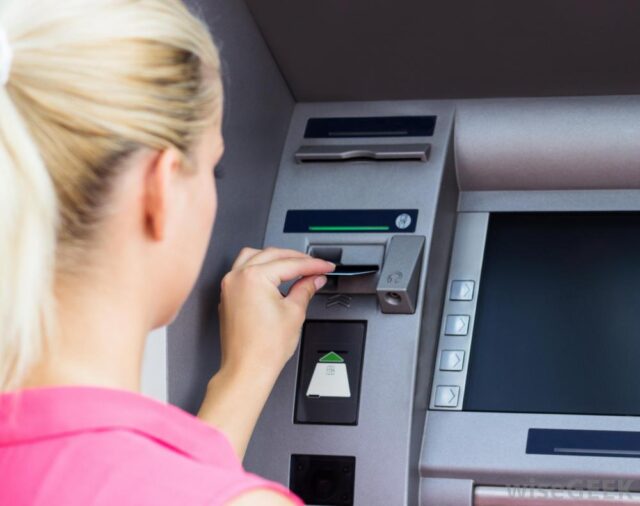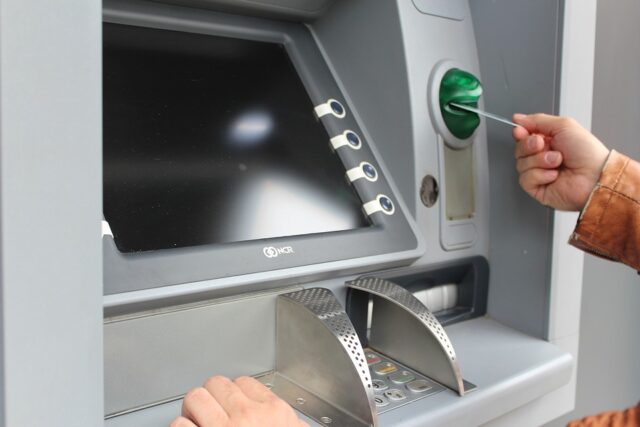
It would be quite annoying if you had to go to a bank every time you wanted to withdraw money from your bank account.
Thankfully, there is something that can help us skip the line – an ATM. The process is simple, you pop in your card, type in the pin code, choose the amount and you are good to go. However, did you ever think about the tech behind them?
Now, although the process of withdrawing money is easy, the technology behind ATMs is quite complex.
If you are interested in learning more about these mechanisms, the text below will feature a list of tech that made these machines possible. However, before we take a look at the tech, let’s first take a look at what they are:
An Introduction to ATMs

An Automated Teller Machine – or as it is most commonly referred to as an ATM – is a banking tool that allows individuals to finish some simple transactions without the assistance of the bank clerks. Now, these machines can usually be found in front of banks, but, you can also find them in a wide range of stores such as shopping malls or supermarkets.
There are two main types – the basic one that can allow users to withdraw money and it will also provide them with a report of their balance.
The other one is a bit more complex since it allows people to withdraw cash and receive the balance, however, it also accepts money, it can process credit card payments, and it can allow the user to see the information connected to their account.
The Two Connection Types
Almost all processors can support the two main types of ATMs. The types that are available are:
- The Leased Line Type – that connects directly to the processor by using a four-wire point that directs everything through a telephone line. This type is usually the one implemented in banks or other places. The cost of having and operating this device is extremely high.
- The Dial-Up Type – now, the working principle of this device is the same as the leased ones, however, instead of using a telephone line, it connects via a normal phone using an Internet modem. It does not require any special connections and the expenses of having one is quite low. If you want to see additional information about the costs of having these devices, you can learn more here.
The Technology Behind ATMs

So, now that you know exactly what they are, let’s take a closer look at its components that actually allows them to work:
The Input Technology
An ATM has two main input devices that include:
- A Reader For The Cards – the card reader falls into the input category since it can read the information from the card. Basically, it is the technology that identifies a specific account by using the magnetic stripe on the back of the card. The credit cards can be swiped, pressed, or inserted into the machine and it will read the data.
- A Keypad – once you have inserted your card, the machine will ask you to input other information such as your pin code. Without the code, you cannot withdraw funds from your account. Now, the keypad is also used to operate the machine, meaning that you can choose different options with it.
The Output Technology

An ATM has four main output devices that include:
- The Speakers – the speaker provides the audio from the machine. This usually means that you can hear sounds when you press specific keys on the keypad.
- The Display Screen – the screen will show you information about your transaction. You’ll be able to see every step that you take on the screen. The most common screens used in an ATM is usually a CRT or an LCD one.
- The Printer For The Receipt – if you want to have information about your withdrawal, you can choose for the machine to print a receipt. The receipt will feature the date/time of your transaction, the amount of money withdrawn from the accounts, as well as the balance you have left.
- The Money Dispenser – now, it wouldn’t really be a money withdrawal device if it could not provide you with the funds you want. This is where a cash dispenser comes in. This is the machine part that allows you to collect the cash. It will count every bill and it will give you the requested amount. All these activities are done with high precision sensors.
There are also other important things behind these devices including:
- The Network – the ISP or Internet Service Provider has an important function in the ATM world. It can provide communication between the bank and the processors. When you make a transaction, the details are implemented by the card reader. This information is then passed on to the processor. The host processor will then check your information with a bank and if all of the information matches, it will send an approval code to the machine, hence, allowing you to withdraw funds.
- The I/O Board – the I/O board is a circuit board that is in charge of controlling the communication between the previously mentioned host processor and the Internet. Now, it is an important feature of all ATMs and without it, you would not be able to complete any transaction.
- Security – if you used these devices before, you know that there is a secured PIN code that your bank keeps secret. If someone steals your card, they won’t be able to get your code from your credit card. The ATM usually has strong software that encrypts these details, hence, all of the bank accounts are secured by these programs.
- The Mainboard – the most important part of these devices is probably the mainboard. This is where the memory and CPU are featured, and the mainboard connects all the previously mentioned components.
Conclusion
As you can see, these devices look relatively simple, but, they are, in fact, complex machines that require a lot of components to work properly. The machines do not only provide people with quick access to their accounts but, they also help banks with operating efficiently.







